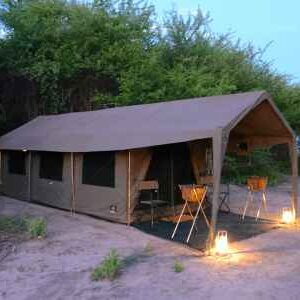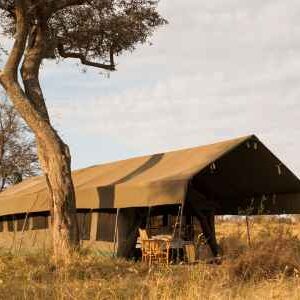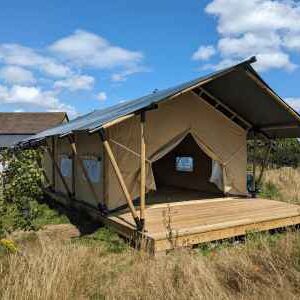Best Uses for Safari Lodge Tents
Safari lodge tents are incredibly versatile and can be used in a variety of settings, making them an excellent investment for different types of businesses and private ventures. One of the most common uses for these tents is in glamping resorts, where guests seek a luxurious yet authentic outdoor experience. These resorts are popular with adventure travelers, honeymooners, and families looking for a unique vacation that combines nature with the comforts of home. Safari lodge tents allow resort owners to create high-end accommodations without the need for permanent, costly structures.
In addition to glamping, safari lodge tents are frequently used in eco-lodges and wildlife safaris. In national parks, game reserves, and nature preserves, these tents offer guests a way to experience wildlife and natural landscapes up close, while still enjoying modern amenities like en-suite bathrooms and comfortable beds. Safari tents blend seamlessly into the environment, offering an immersive experience without disrupting the natural beauty of the location. Their eco-friendly construction also makes them a popular choice for environmentally conscious businesses that want to minimize their impact on the environment.
For private landowners or individuals looking for a personal retreat, safari lodge tents can serve as the perfect private getaway. Whether set up on a lakefront property, in the mountains, or deep in the forest, these tents offer a way to escape from the hustle and bustle of daily life. For event organizers, safari lodge tents are also a great option for event accommodations at weddings, music festivals, or corporate retreats. Their unique design and luxury feel offer guests a memorable stay, making them an attractive option for outdoor events.
Materials Used in Safari Lodge Tents
The durability and quality of a safari lodge tent largely depend on the materials used in its construction. Canvas is the most commonly used material for the tent walls and roof. High-quality canvas is both breathable and waterproof, making it ideal for outdoor use. It allows air to circulate while keeping moisture out, ensuring that the interior remains dry and comfortable. Additionally, many safari tents use canvas treated with UV protection to prevent fading and damage from prolonged exposure to the sun.
For the frame, safari lodge tents typically use either wood or metal, depending on the style and requirements of the tent. Wooden frames, often made from treated timber or hardwood, provide a natural aesthetic that blends beautifully with the surrounding environment. Wood is also a strong and sturdy material, able to support the weight of the tent and withstand various weather conditions. Metal frames, usually made from galvanized steel or aluminum, offer even greater durability, especially in harsh environments where wind or heavy rain might be a concern.
Other materials used in the construction of safari lodge tents include mesh for windows and doors to ensure proper ventilation while keeping insects out. Waterproof linings are often used for the flooring to prevent water from seeping in, particularly in wet climates. For insulation purposes, some safari tents are equipped with additional layers of insulated fabric or even built-in heating systems to regulate the internal temperature, making them suitable for both hot and cold climates.




